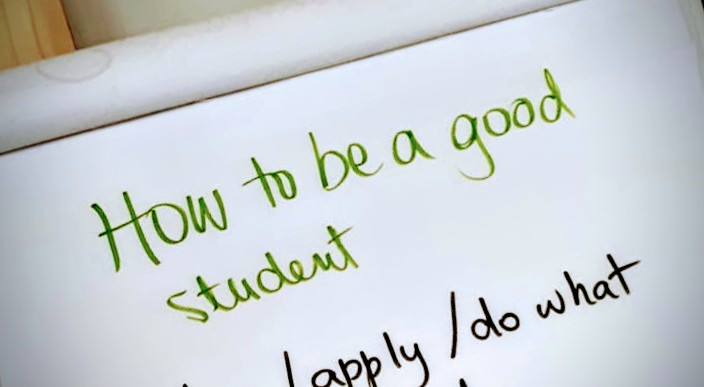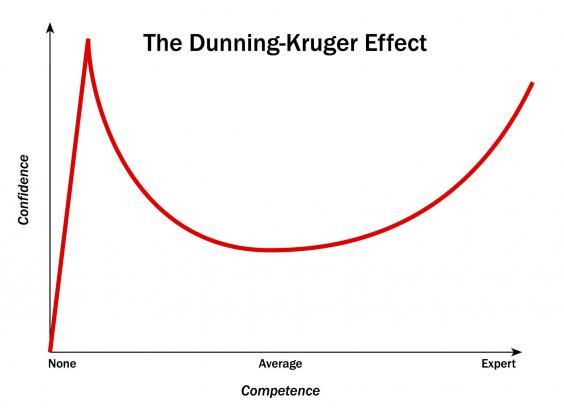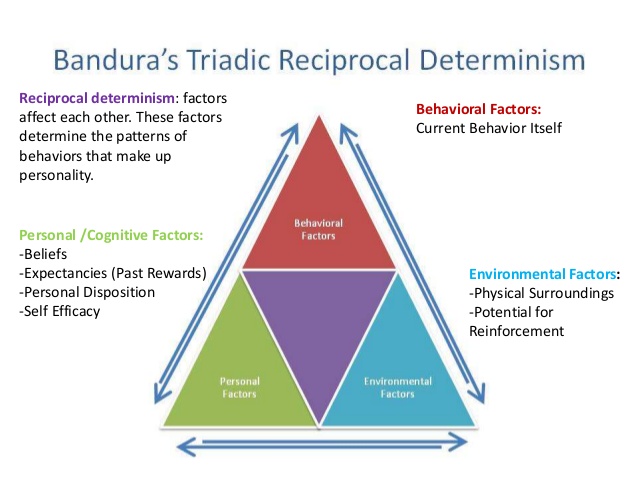by Andrea Kurogami
We are very impressed by this article from our dear friend and Kinbaku LuXuria “colleague” and we wanted to give it a re-post here in our collection and also provide a German translation. The original is published at their page:Kinkyphillia.

We often talk about the quality of the didactics and the teachers’ competence. We rarely think about the students’ capability of learning.
We should first consider that adult teaching & learning are way different compared to school learning we were used to when we were children. So, why do we want to learn how to tie?
Every one of us has different reasons, but all the students should have a common goal: learn something and obtain results.
Does an efficient way to learn Japanese bondage exist? And if so, what is it?
Obviously, I’m not able to answer this question – or at least I’m not able to give a general answer.
By the way, I thought about my personal way of studying. I recreated the path I made and that – with the appropriate adjustments – I’m still on. I thought again about the didactics I received and the way I absorbed it. I decided to point out some relevant aspects in order to provide food for thoughts.
1. Studying motivation
When you lose interest in something, you also lose the memory of it.
[Goethe]
Motivation is the basis of learning. It isn’t simply “why do I want to tie?”. It’s so much more. It’s why do I want to learn to tie? What pushes me to? Where do I want to arrive? Am I ready to invest some time in it?
How many people start doing something and then quit? The typical example is how stop smoking or how to start a diet: there is nothing more difficult than being able to continue what someone starts. This is mainly due to the loss of motivation. This is why motivation needs to be continuously fed: it is better to set some small realistic and achievable objectives. A series of “micro” objectives turn into one macro objective!
2. Learning model
Another fundamental step for the students is to recognize their personal learning model. Bondage is a handcraft practice. Learning mainly passes through observation and reproduction. One model that I really feel belongs to my person is by Albert Bandura: learning passes through four phases.
- Observation
- Memorization
- Reproduction
- Assimilation.
After having attended a workshop where I learnt something, do I really know how to do what I learnt? The answer is: NO! Learning ends with the assimilation of concepts, skills and whatever regards the practice we are studying!
3. The importance of the basics
It is not possible to raise a building on the sand. It needs robust foundations. And the higher the building will be, the more foundations must be solid!
Before starting to be into complex bondage, before suspending, solid basics must be assimilated. After all, it’s just bondage: it’s not rocket science. Basic concepts are really a few and they are the first step in order to continue studying and go further.
4. Good practice is better than just practice
Practice is needed to assimilate concepts. Anyway, practice can be a double-edged sword: practising errors will make you assimilate the errors! How to avoid it? Discussions and comparisons with other practices often help but personally what helped me more was keeping asking myself over and over about why things were done in a certain way. In other words, critical sense. I often hear people complaining that they can’t practise because they don’t have a partner. Honestly, it’s possible to do a lot of exercises to widely improve the handling and to take more confidence with basics! When I started studying, Shiawase and I lived in two different cities and we were just able to tie once per week, during the weekend. Usually, I was able to find time to train myself and to do self-practice two or three times per week, typically while watching a tv series.
5. Difficulties and Dunning-Kruger effect.
The Dunning–Kruger effect is a cognitive bias in which people of low ability have illusory superiority and mistakenly assess their cognitive ability as greater than it is. The cognitive bias of illusory superiority comes from the inability of low-ability people to recognize their lack of ability. Without the self-awareness of metacognition, low-ability people cannot objectively evaluate their competence or incompetence

It’s possible that the more we practice, the more we perceive that things are impossible for us. It’s probable that some difficulties appear like insuperable. Difficulties must be taken as opportunities for growth and not like obstacles. From every single difficulty, something can be learnt!
6. A balance between classes and practice
Available education is very wide and extended. In the last year, I’ve seen several people taking lessons and following classes or dedicated evening even with a weekly occurrence. Most of the times, without significative improvements. As explained at the point no. 2, I strongly believe that the assimilation phase is fundamental: following assumptions are made on my personal experience.
I started to tie in October 2016. In two years and a half, I attended to eight workshops. Making a (not so) rough estimation of the hours spent between received didactics and practice, I found a ration of 1 : 10. It means that for every hour of didactic received, I tied 10 hours.
If I take into account just 2018, the ration moves to 1 : 15. Actually, I tie a lot more since I started to teach.
My tip is: try to find your own good ratio, but consider that you’ll never improve by only taking classes.
7. Reality check
It doesn’t matter if it’s a bondage session or just exercises, keeping contact with reality is really important. In the point no. 2 we discussed about critical sense. In my case (especially in the beginning) it was difficult to realise in real time if my bondage was good or not. I started to record my sessions and to take a look at them with a cold mind. Having the possibility to rewind and to look at them more than one time, it helped me understand what worked and what didn’t, what I had to change and what I particularly liked to do.
8. Benchmarks
To me, they complete the reality check. It’s difficult to “measure” progresses in bondage. It’s a human activity in which it’s difficult to get objective parameters. The most complex and elaborated tying could not reach the value of a session with a single rope. By the way, I think that knowing how I’m using my time is paramount, if there are any improvements and if not, this will help me at least to understand that I need to change something.
Using benchmarks I can “measure” my progress. My favourite one is time: the time that I take to do a double column tie, a futomomo, a TK. The time I take to close four suspensions line in a row. Looking at this time decreasing or being stable helped me to understand a lot about what I changed.
Two notes about time: when I speak about doing a “fast TK” I refer to a well done TK, more than acceptable and in any case that can be useful for a suspension. Thus, I’m not saying that a rigger must learn how to tie fast just because of tying fast: this is why I like to say “efficiency” instead of speed. If I am able to tie a TK in less than 3′, when I’m doing my real session I can do a TK in 5′ if I want to, but I’ll be in control and I’ll be able to enjoy the moment way more!
9. Workshop or private tuitions?
I started to study with a private tuition, with Giuseppe Ambrosia in 2016. I needed it because I wanted to attend a course by Riccardo Wildties in Turin, in late 2016. Giuseppe gave me very good basics and he made me able to attend an intermediate class. The second private lesson I took was again with Giuseppe, half a day in 2018, when I wanted to enforce some basics before doing the exam for the certification for Kinbaku LuXuria’s instructors.
Generally speaking, I think that the one-to-one lesson is the most effective way to learn. Anyway, it is also the most expensive: usually, a private lesson costs way more than a workshop. To people asking me if doing the one or the other, I like to suggest that a workshop with good educators could be a good starting point. Learn the basics, don’t focus on a style or another and then maybe after having chosen the way that suits you more, learn through workshops and go for privates for refining.
Up to now, the lessons with Giuseppe are the only private lessons I took. Next one is scheduled in March 2019, an intensive weekend with Riccardo Wildties and Red Sabbath.
10. Comparison and study group
In Summer 2017 – motivated by the desire to get better – we proposed the “Research Group“. More or less, we met monthly together with three other couples and we tied once at the time, after having decided a topic for the group. We learnt a lot from those meetings. Group dynamics helped us cutting corners and sharing ideas and different visions on the same concepts. We focused on doubts and we did ourselves a lot of questions.
Coming back to Bandura’s model, we are really influenced by the environment and of course by the people around us. This model is known as “Theory of Social Learning“.

To be efficient, people in the study group should have similar levels and of course basics must be really robust. The will of going deeper is also needed: a study group is not a rope-jam!
11. Never stop studying!
Never, never stop. Especially when we get a good level. Practice must be done, things – like every discipline – tend to become out of date so we need to stay updated. Bondage must be continuously lived. it’s not like going on a bicycle: it’s very easy (and also dangerous!) to regress.
12. No one learns through caressing
I know that what I’m going to write is unpopular and politically incorrect. Even not thinking of bondage, how many people who excel in their work or discipline – I said excel, not being good, but excelling – do you know who had a “soft” education, without tough moments, crisis and failures?
Personally, I don’t know one. On my experience, on myself and on the people who surround me in my daily job, on the people I met doing sports and in different spheres of social life, usually who is really really good in something worked hard. They sweated through hard times. And they almost always were lucky: there was someone who pushed them, who criticized them, who made them grit their teeth.
As an engineer, as a sportsman, as a rigger, I’m grateful to all those people who pushed me and pressured me when my results were good but not the best. I say thanks to all the people who instead of telling me “good job” showed the defects and weak spots, in order to make me able to turn them in my strong points!
13. Self assessment as student.
Always ask yourself if you are studying in the right way. The most of the time people go to workshops classes or tuitions because of a certain inertia. Am I getting better? What did I learn after the last class? Did I really find it useful? After one year of studying, where I am and where I should be? Did my speed of learning change in some way?
This is my final and most felt consideration: if you want to become good, don’t ask to pros how they became good. Search for people who started almost from zero and in one year or less are doing a very great bondage and ask them how they trained or who were their teachers. It will help you a lot to find the most suitable way of studying for yourself.
